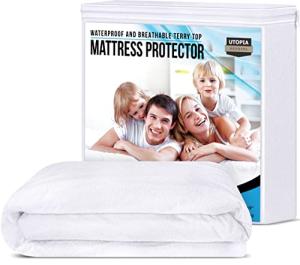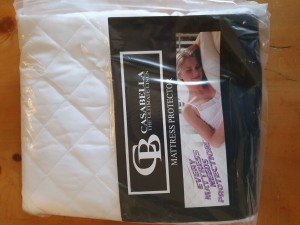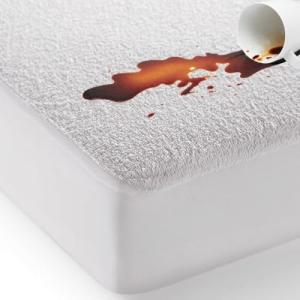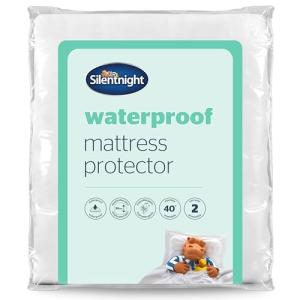The Importance of Waterproof Mattress Protectors for Single Bunk Beds
Bunk beds are a popular and practical solution for maximizing space, especially in children's rooms, dorms, or guest accommodations. While bunk beds serve as a space-saving option, maintaining their longevity and cleanliness can be a challenge. One crucial accessory that can help preserve the mattress's condition is a waterproof mattress protector. This guide delves into the significance of waterproof mattress protectors, their features, benefits, and tips for selecting the right one for single bunk beds.
What is a Waterproof Mattress Protector?
A waterproof mattress protector is a thin layer often made from materials such as polyurethane that covers the mattress to shield it from spills, stains, allergens, and dust mites. Unlike regular mattress covers, waterproof protectors prevent liquids from seeping through, ensuring that the mattress remains dry and hygienic.
Benefits of Using a Waterproof Mattress Protector
-
Protection Against Spills and Accidents: Children often experience nighttime accidents, whether it's from bedwetting or spills. A waterproof mattress protector stops moisture from penetrating the mattress, which can help prevent stains and odors from setting in.
-
Increased Mattress Lifespan: A quality waterproof protector can significantly extend the life of a mattress. By keeping the mattress clean and dry, it prevents the growth of mold, bacteria, and mildew, ensuring that the mattress remains hygienic and comfortable for years.
-
Allergen Barrier: Waterproof mattress protectors create a barrier against dust mites, pet dander, and other allergens. This feature is particularly beneficial for individuals with allergies or asthma, as it can help reduce symptoms and improve sleep quality.
-
Easy Maintenance: Most waterproof mattress protectors are machine washable, making them easy to clean and maintain. Frequent washing can help keep the sleeping environment fresh and hygienic.
-
Comfort Enhancement: Though they provide a protective layer, many waterproof mattress protectors are designed with comfort in mind, using soft, breathable fabrics that can enhance the sleep experience.
Features to Consider When Choosing a Waterproof Mattress Protector
When searching for the perfect waterproof mattress protector for single bunk beds, several features should be considered:
-
Material: Look for materials that are breathable yet waterproof. Options like cotton terry, bamboo, or polyester blends are often preferred for their softness and durability.
-
Fit: Ensure that the protector has deep pockets to fit snugly over the mattress without slipping off. A fitted design is ideal for the elevated structure of bunk beds.
-
Noise Level: Some waterproof protectors can be noisy when moving in bed. Seek out products that specifically advertise a noiseless design.
-
Hypoallergenic Properties: Consider a mattress protector that boasts hypoallergenic properties to provide additional protection against allergens.
-
Ease of Care: Machine-washable protectors with quick-drying properties offer convenience for regular cleaning.
How to Install a Waterproof Mattress Protector on a Bunk Bed
Installing a waterproof mattress protector on a single bunk bed is an easy process, but it may require some assistance for safety reasons, especially when dealing with the upper bunk. Here's how to do it:
-
Select the Right Size: Make sure to purchase a protector specifically designed for the size of your bunk bed mattress, typically a twin or twin XL.
-
Remove Bedding: Strip the mattress of any existing sheets and bedding.
-
Position the Protector: Hold one end of the mattress protector and place it on top of the mattress.
-
Spread It Evenly: Begin at one corner, tucking the protector under the mattress on both sides for a tight fit.
-
Secure All Edges: Follow the same method for all corners, ensuring that the protector is evenly spread and snug.
-
Replace Bedding: Once the protector is securely in place, put the sheets and bedding back on.
Frequently Asked Questions (FAQs)
1. Do waterproof mattress protectors make noise?
- High-quality waterproof mattress protectors are designed to be quiet. However, lower-quality products may crinkle. Opt for options labeled as noiseless if this is a concern.
2. Can I wash a waterproof mattress protector?
- Yes, most waterproof mattress protectors are machine washable. Check the care instructions for specifics on temperature and drying guidance.
3. Will a waterproof mattress protector make my bed too hot?
- Many modern waterproof mattress protectors utilize breathable materials that allow for proper airflow, helping to regulate temperature and reducing the risk of overheating.
4. How often should I clean my waterproof mattress protector?
- It's recommended to wash your mattress protector every 1 to 3 months, or more frequently if bedwetting or spills are common.
5. Are waterproof mattress protectors effective against bed bugs?
- Some waterproof mattress protectors provide a barrier against bed bugs; it's essential to read the product description to determine if bed bug protection is included.
A waterproof mattress protector is an essential investment for those utilizing single bunk beds. With their myriad of benefits—from prolonging mattress life and promoting hygiene to providing extra comfort—they ensure a cleaner, healthier sleeping environment. By considering the features that matter most, you can confidently choose the right protector to suit your needs and create a cozy, safe sleeping space for children or guests. Whether you’re dealing with unavoidable spills or pesky allergens, a waterproof mattress protector serves as your first line of defense, protecting one of your most important investments—your mattress.






